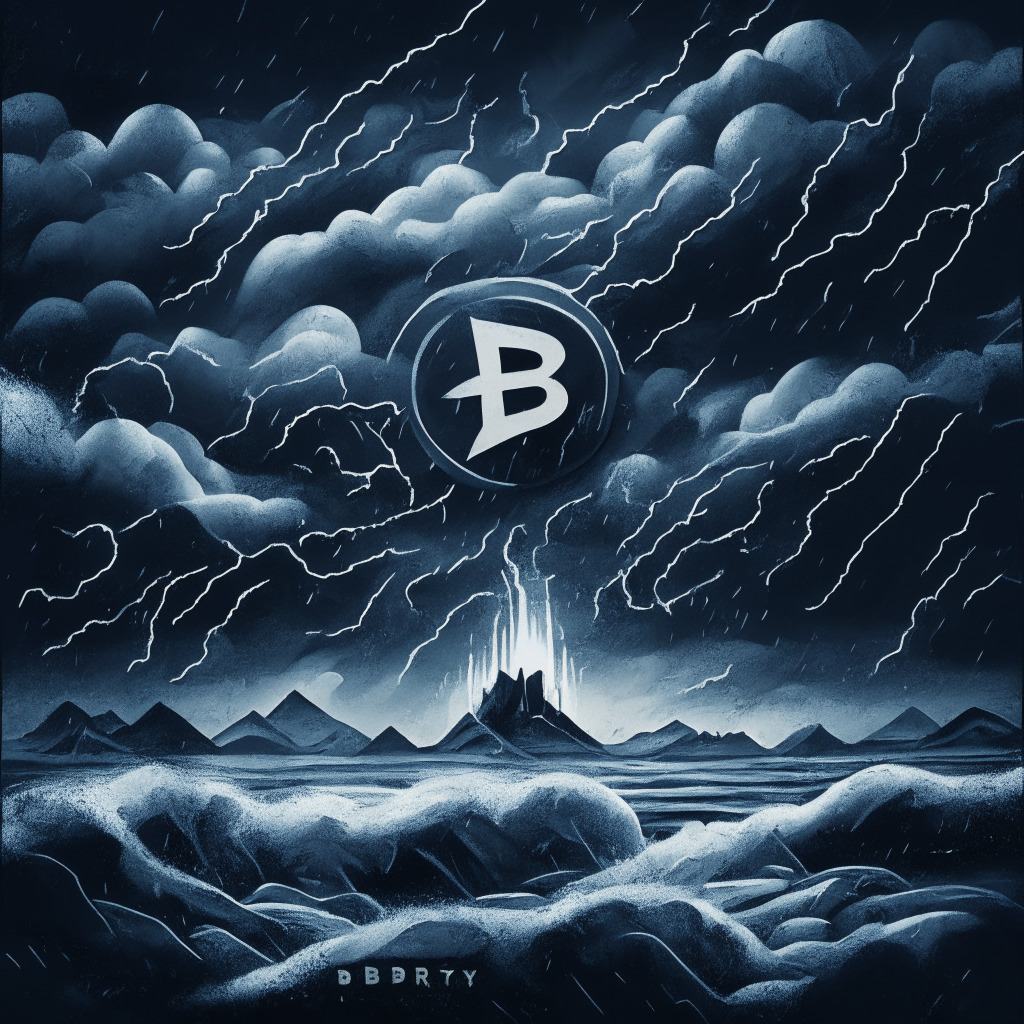In its first significant mishap, Ethereum Layer 2 network, Base, experienced an outage halting new block production. Despite quick repair and recovery, concerns about the reliability of such newer networks have been raised. The future of blockchain may be promising, but these newer platforms must work on technical robustness and gaining users’ trust. Meanwhile, Genesis Global Trading announced the voluntary cessation of its spot trading services, reflecting the stiff competition and constant evolution in the crypto market.
Search Results for: here
Navigating the Crypto Gold Rush: The Rise of Blockchain Billionaires and the Inherent Risks
“The ‘Crypto Wealth Report’ reveals an increasing number of global millionaires hold significant crypto assets, particularly Bitcoin. Yet, concerns range from future trading prohibitions to tax policies on digital assets. Despite volatility and risks, many jurisdictions are encouraging safe storage policies, recognizing crypto as a legitimate asset class.”
Ethereum’s Struggle: Battling Market Fear Amid Shaky Support Levels
Despite Ethereum’s 31.3% price surge between March 10 and 18, there are concerns about the crypto’s ability to maintain this upward momentum. Rising bearish sentiment, decreases in key ETH price metrics, and negative market developments are troubling the ecosystem. There are fears over potential liquidation of some $4.8 billion ETH deposits held in the Grayscale Ethereum Trust, amid declining smart contract transactions and investor interest. Ethereum’s position is further pressured by its competitors like Visa integrating Solana blockchain and Coinbase planning to convert old versions of USDC to a new format.
Rise of Crypto Staking Amidst Gloomy Blockchain Atmosphere: Can It Be the Future?
“Staking in the crypto world is showing resilience amidst a challenging year, with a 292% surge in total value locked (TVL) for liquid staking protocols. Ethereum staking is recovering, especially due to the ‘Merge’ event that transitioned Ethereum to live staking platform. It’s compared with the ‘on-chain equivalent of government bonds’, promising a safer alternative than DeFi lenders.”
The Ethereum Supreme Court: A Radical Notion to Enhance Blockchain Safety and Stability
Matter Labs CEO, Alex Gluchowski, suggests the creation of an “Ethereum Supreme Court” to mediate disputes that could impact the Ethereum blockchain’s integrity. His proposed system aims to formalize Ethereum’s “social consensus layer” to safeguard platforms against exploitation, enabling community-engaged contract-based mediation in crisis scenarios.
AI Regulation Debate: Need for New Federal Agency versus Inherent Impossibility
A survey conducted by Axios, Generation Lab, and Syracuse University reveals diverging opinions among computer science professors regarding AI governance. While 37% propose a dedicated “Department of AI” for regulation, 16% believe Congress should handle these AI regulations. However, there’s notable skepticism about AI’s potential to replace human tasks.
Navigating the Cryptosphere: The Courting of Controversy and Confidence by Crypto Lawyer Heaver
Irina Heaver, a prominent crypto lawyer, faces scrutiny and threats due to her outspoken critique of certain altcoins and their founders. Despite these challenges, Heaver insists on informing her followers about potential lawsuits in the crypto industry and exposing questionable projects.
Ethereum-based Wallet Scams: The Dark Side of Crypto Convenience or Heightened Awareness Call?
“Scammers exploit MetaMask’s reputation by redirecting users to fake websites via official government website URLs. Unwary users link their MetaMask wallets to these hoax sites, inadvertently giving fraudsters control over their assets. Despite MetaMask’s efforts, such scams have left crypto enthusiasts questioning their holdings’ security.”
Federal Reserve Impacts on Bullish BTC and Ethereum’s Centralization Struggles
Arthur Hayes, former CEO and co-founder of Bitmex, anticipates a response to the BTC bull market within six to twelve months. This expectation is connected to the Federal Reserve’s $25 billion program meant to stabilize the U.S. banking system. Meanwhile, Ethereum faces challenges around the centralization of nodes and scalability.
Ethereum’s Tug of War: Struggling Between Node Centralization and Ultimate Scalability
Ethereum is battling with the issue of node centralization, with much of its network activity verification reliant on centralized services like AWS. Ethereum’s co-founder, Vitalik Buterin, has indicated that true decentralization, achievable through “statelessness” and operability on affordable hardware, is a key part of Ethereum’s long-term roadmap, despite the technical challenges anticipated.
Ethereum Supreme Court: A Solution for DeFi’s Contract Disputes or a Threat to Small Protocols?
Matter Labs CEO, Alex Gluchowski proposes an “Ethereum Supreme Court” for dealing with recurring smart contract disputes in DeFi. His vision involves a blockchain-based court system, similar to real-world judiciaries, to provide resolution for contract-related disagreements, particularly focusing on enhancing measures to handle unforeseen vulnerabilities and emergencies in Layer 2 implementations.
Accelerating Blockchain’s Future: How Arbitrum’s Stylus Transforms Ethereum Virtual Machines
The founder of Arbitrum, Ed Felten, introduces Stylus as a game-changer for Ethereum Virtual Machines (EVMs). Stylus allows developers to use languages like Rust, C, and C++, speeding up computations and reducing gas costs. This could lead to advancements in code development, higher performance on-chain operations, and potentially making EVMs safer.
Decoding the ‘Ethereum Supreme Court’ Vision: Innovative Shield or Expensive Experiment?
Alex Gluchowski of Matter Labs proposes the formation of an ‘Ethereum Supreme Court’, an on-chain hierarchical court system working alongside current judicial structures to safeguard the Ethereum network against undue external interference. This system aims to handle various issues like disputes and emergency upgrades but its success depends largely on social consensus.
Ethereum’s Co-founder Sells Remaining Stake in MakerDAO: A Signal for Blockchain’s Future?
Ethereum co-founder, Vitalik Buterin, recently traded his remaining stake in MakerDAO tokens after MakerDAO’s co-founder announced plans to reimplement the project on a new blockchain, NewChain. The move shows shifting alliances and notable developments in blockchain dynamics.
Ethereum’s Staking Limit, Argentina’s Bitcoin Surge, and Blockchain Security: Weekly Crypto Roundup
“In an evolving crypto landscape, Ethereum staking providers limited their ownership to 22%, towards decentralization. Bitcoin adoption rises in Argentina contrasting El Salvador’s caution. Binance addresses regulatory environment while security concerns persist despite OpenZeppelin’s Defender 2.0 upgrade. NFTs, CBDCs progress, and stricter crypto regulations emerge.”
Ethereum’s Market Struggle: An Unsteady Path to Growth or a Descent to Depths?
“Ethereum’s price is struggling to push past the $1,750 mark, prompting fears of further losses. However, hopes remain for a breakthrough at $1,700, possibly leading to $1,800. However, resistance at these levels may force Ethereum to find support at lower price points.”
Accelerating Ethereum Blockchain Verification: StarkWare, Herodotus, and New Challenges Ahead
“StarkWare and Herodotus have launched proprietary technology enabling users to verify data from any point in Ethereum’s blockchain history. This new technology, using on-chain accumulator and STARK proving technology, enhances blockchain access, speeds up data verification and could revolutionize Ethereum-based applications and services.”
Preserving Decentralization: Ethereum Staking Giants Pledge to Self-Limit Market Share
Several leading Ethereum liquid staking providers, including Rocket Pool, StakeWise, Stader Labs, Puffer Finance, and Diva Staking, are adopting a self-limiting strategy to own no more than 22% of the Ethereum staking market, thus working to avoid a potential increase in staking centralization. This move is in contrast to entities like Lido Finance, which advocates for growth and dismisses the self-limitation approach.
Cryptocurrency Predicaments: Ronaldinho’s Alleged Scam and Ethereal Debate on Ethereum Staking
Former professional soccer player, Ronaldinho denied his involvement in a $61 million crypto pyramid scheme at a congressional hearing in Brazil. The scheme, known as “18kRonaldinho” used his likeness to promise daily returns of 2% on cryptocurrency. The verdict is still out on the reimbursement for those who invested in the company, highlighting the complexity of crypto-regulations and market dynamics.
Ethereum’s Liquid Staking: Controversy Erupts over 22% Validator Cap Debate
Ethereum liquid staking providers, including Rocket Pool, StakeWise, Stader Labs, and Diva Staking, have agreed to a self-imposed limit of 22% ownership of validators to maintain Ethereum’s decentralization. Proposed by Ethereum core developer Superphiz, this limit is seen as a means to prioritize network health over profits, requiring at least four major entities to finalize the chain. However, Lido Finance, the leading Ethereum staking provider, opposes this limit.
Court Ruling Throws Crypto Sphere into Disarray: ETH and BTC as Commodity vs Security
A New York district court dismissed a lawsuit against Uniswap, ruling that BTC and ETH are commodities, not securities. The court defended the decentralized nature of Uniswap, stating the investors’ claims would be better addressed to Congress, not the court. This ruling may influence future lawsuits against decentralized protocols.
Robinhood’s Colossal Ethereum Wallet: A Peek into Crypto Brokerage Titans and the Challenges Ahead
“Robinhood reportedly owns one of the world’s largest Ethereum wallets, holding over 1.5 million ETH worth about $2.54 billion. In addition to Ethereum, the wallet also embraces over 100 other ERC-20 tokens valued at $177.1 million.”
Riding the Wave of Memes: Ethereum Classic’s Struggles vs Sonik Coin’s Boom
“Ethereum Classic (ETC) network activity dips amid market volatility, generating mere $26 in fees within 24 hours, fueling concerns about its future. Meanwhile, meme coin Sonik Coin ($SONIK), boosts market presence, promising high returns with a staggering 91% staking APY and strategic branding, despite the inherent market risks.”
Robinhood’s Colossal ETH Holdings Vs Binance’s Calculated BUSD Retreat: Winners and Losers in Crypto Sphere
Robinhood, known for its online brokerage services, has been identified as the fifth largest holder of Ethereum ($2.54 billion worth), serving as a secure depository for user balances. Despite this, Robinhood has seen a decrease in their crypto trading activity. Meanwhile, Binance is winding down support for its Binance USD (BUSD) due to allegations of being an unregistered security.
StarkWare’s Starknet Blockchain Upgrade: The Technological Paradox in Crypto Sphere
StarkWare, the force behind Starknet blockchain, plans to restore accessibility of digital currency for users, following outcry over wallets turning empty after a major tech upgrade. Those who didn’t timely upgrade their Argent or Braavos wallets experienced the issue. Starkware underlined paradoxes of tech advancements in the crypto sphere, balancing benefits against potential user frustrations.
Ethereum’s Scalability Contest: Layer-2 Solutions and the Turning Tide of Gas Fees
Ethereum’s congestion problem might be calming with the help of “layer-2” projects designed for faster, more affordable transactions. Base, a layer-2 project from Coinbase, may demonstrate this effectiveness, as Ethereum’s gas fees have significantly dropped, likely due to layer-2 solutions. Ethereum’s upcoming upgrade, EIP-4844, could further maintain this balance by increasing L2 throughput and reducing transaction costs. However, Ethereum’s future remains uncertain, as the effectiveness of layer-2 projects to resolve scalability issues is yet to be seen.
Bridging the Gap: BOB Solution Blends Bitcoin and Ethereum Amid Controversy
“Interlay recently unveiled its Minimum Viable Product (MVP), the Build on Bitcoin (BOB) solution, designed to link Ethereum blockchain advancements with Bitcoin’s user community. BOB will enable decentralized application development, leveraging Rust smart contracts compatible with Bitcoin legacy libraries, while also supporting Ethereum Virtual Machine. Despite concerns from some Bitcoin advocates, the Interlay team remains optimistic about broadening Bitcoin’s applicability.”
Bankruptcy Escape Route for DCG: A Breather or a Necessary Evil for the Crypto Sphere?
“Genesis, a crypto lending firm, filed for bankruptcy due to market conditions causing significant withdrawals. A recent agreement with its creditors, DCG, could see up to 90% recovery for Genesis creditors. The deal involves a settlement of over $1.7 billion in liabilities and introduces new debt facilities and a partial repayment agreement, offering some relief in a challenging market.”
Cryptosphere Tremors: BitBoy Crypto Decouples from YouTuber Ben Armstrong – Impact & Implications
“The ‘BitBoy Crypto’ brand is parting ways with popular YouTuber Ben Armstrong, citing issues of substance abuse and accusations of damage to network employees. This decision raises questions about the brand’s future and the influence of its key figure.”
Navigating the Regulatory Labyrinth: New Rules and Fluctuating Tides in Crypto Sphere
“The United States Internal Revenue Service (IRS) is proposing new tax policies for the sale/exchange of digital assets by brokers, attracting criticism from crypto figures. Meanwhile, Gemini, a cryptocurrency exchange, faces a SEC lawsuit on potential regulatory violations. These developments reflect the ongoing struggle to balance regulation with innovation in the emerging field of cryptocurrency.”
Ethereum’s Lower Network Activity: A Sign of Successful Scaling Solutions?
Ethereum’s gas fees have hit an 8-month low due to low network activity, yet layer-2 scaling solution popularity is on the rise. This indicates the vital role of scaling solutions in maintaining low fees even amidst growing decentralization. Notably, Ethereum 2.0 and layer-2 solutions seem to alleviate the issue of high adoption against expensive gas fees and slow transaction times. Ethereum’s evolving technology is making it increasingly invincible, even against rival blockchain platforms.
Ethereum’s Dipping Costs: A Signal of Increasing L2 Scaling Solutions Popularity and Blockchain Evolution
“Ethereum, a leading programmable blockchain, is at its most affordable in 8 months with plunging transaction costs. The decline points towards the increasing use of Ethereum’s layer 2 scaling solutions. Adopting Layer 2 solutions, including Coinbase’s L2 chain, has been pivotal in reducing congestion and managing transaction costs in Ethereum’s primary network.”































